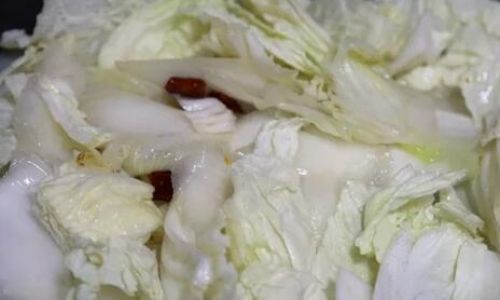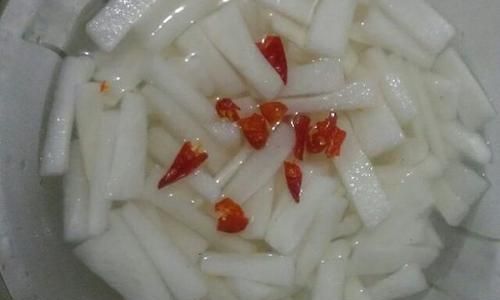Table of content
Cabbage, a humble yet versatile vegetable, often finds its way into kitchens worldwide. Whether you’re a seasoned home cook or a novice in the culinary world, mastering the art of cooking cabbage can elevate your meals with minimal effort. This article delves into a fail-proof, mouthwatering stir-fry recipe that highlights the natural sweetness and crunch of cabbage while keeping the process quick and straightforward. By the end of this guide, you’ll not only learn how to prepare this dish but also understand the science behind its flavors, tips for customization, and ways to incorporate it into various meals.

Why Cabbage?
Cabbage is a nutritional powerhouse packed with vitamins C and K, fiber, and antioxidants. Its affordability and long shelf life make it a pantry staple in many households. Unlike some vegetables that require intricate preparation, cabbage shines in simplicity—a quick chop, a hot pan, and a handful of seasonings are all you need to transform it into a dish that rivals restaurant-quality fare.
The Stir-Fry Method: A Culinary Shortcut
Stir-frying is an Asian cooking technique that involves cooking ingredients over high heat with minimal oil. This method preserves the vegetable’s texture, color, and nutrients while developing a caramelized flavor known as wok hei (the breath of the wok). For cabbage, stir-frying ensures it remains tender-crisp, avoiding the mushiness that can occur with boiling or steaming.
Ingredients You’ll Need
The beauty of this recipe lies in its adaptability. Below is a list of core ingredients, along with substitutions and additions to suit your taste:
-
Cabbage (1 medium head, about 2 pounds):
- Opt for green cabbage for its mild, slightly sweet flavor. Savoy or Napa cabbage works too, though their textures may vary.
- Pro Tip: Remove the outer leaves, halve the cabbage, and core it. Slice into thin shreds (about ¼-inch thick) for even cooking.
-
Aromatics:

- Garlic (3–4 cloves, minced): Adds a pungent, savory base.
- Ginger (1-inch piece, grated): Optional but enhances the dish’s depth.
- Substitutions: Shallots or onions can replace garlic for a milder flavor.
-
Oil (2 tablespoons):
Use a neutral oil like vegetable or canola oil. For a nutty twist, try sesame oil (use sparingly, as it has a strong flavor).
-
Seasonings:
- Soy sauce (1–2 tablespoons): Use low-sodium soy sauce for less saltiness.
- Rice vinegar (1 teaspoon): Balances the dish’s richness with a hint of acidity.
- Sugar (½ teaspoon): Amplifies the cabbage’s natural sweetness.
- Black pepper (to taste): Adds a subtle kick.
-
Optional Add-Ins:
- Chili flakes or fresh chili: For heat.
- Carrots (½ cup, julienned): Adds color and crunch.
- Mushrooms (1 cup, sliced): Introduces umami.
- Protein: Tofu, shrimp, or ground pork can turn this into a one-pan meal.
Step-by-Step Cooking Process
Prep the Cabbage
- Wash and Dry: Rinse the cabbage under cold water to remove dirt. Pat it dry with a kitchen towel or salad spinner. Excess moisture can turn the stir-fry soggy.
- Core and Slice: Stand the cabbage on its stem and slice it into quarters. Remove the tough core with a V-shaped cut. Stack the quarters and slice crosswise into thin shreds.
Preheat the Wok or Skillet
- High Heat is Key: Place your wok or large skillet over high heat. Allow it to smoke lightly—this ensures the cabbage sears rather than steams.
- Add Oil: Swirl the oil to coat the pan evenly. A well-seasoned wok requires less oil than a regular skillet.
Sauté Aromatics
- Garlic and Ginger: Toss the minced garlic and ginger into the hot oil. Stir constantly for 30 seconds until fragrant but not browned (burnt garlic tastes bitter).
Stir-Fry the Cabbage
- Add Cabbage in Batches: If your pan is small, add half the cabbage first. Toss vigorously with a spatula or wooden spoon to coat it in oil.
- Season Early: Pour in the soy sauce, rice vinegar, sugar, and black pepper. Stir to combine.
- Maintain High Heat: Continue stirring for 4–5 minutes. The cabbage will wilt slightly but retain its vibrant green color.
Finish with Flavor Boosters
- Optional Add-Ins: Toss in chili flakes, carrots, or mushrooms during the last 2 minutes of cooking.
- Adjust Seasoning: Taste and add more soy sauce or a pinch of salt if needed.
Serve Immediately
- Garnish: A sprinkle of sesame seeds, chopped cilantro, or sliced green onions adds freshness.
- Pairings: Serve with steamed rice, noodles, or as a side to grilled meats.
Tips for Perfect Stir-Fried Cabbage
-
Don’t Overcrowd the Pan:
Overcrowding lowers the pan’s temperature, leading to steamed cabbage instead of stir-fried. Cook in batches if necessary.
-
Cut Uniformly:
Even shreds ensure consistent cooking. Thicker pieces may remain raw, while thin ones could turn mushy. -
Use Fresh Cabbage:
Older cabbage releases more moisture, resulting in a soggy texture. Look for firm heads with crisp leaves. -
Adjust Seasonings to Taste:
Soy sauce brands vary in saltiness. Start with less and add gradually. -
Embrace the Sizzle:
The high-pitched sizzle during cooking means the pan is hot enough. Lower the heat only if the aromatics start to burn.
Variations to Explore
-
Spicy Sichuan-Style:
Add Sichuan peppercorns and doubanjiang (fermented chili bean paste) for a numbing, spicy kick.
-
Korean-Inspired:
Finish with gochujang (Korean chili paste) and a drizzle of sesame oil. Top with toasted sesame seeds. -
Vegan Twist:
Swap soy sauce for tamari (gluten-free) and add cubed tofu during the last 3 minutes of cooking. -
Creamy Cabbage:
Stir in a splash of coconut milk and a pinch of turmeric for a creamy, golden hue.
Troubleshooting Common Issues
-
Soggy Cabbage:
Ensure the pan is hot enough and the cabbage is thoroughly dried before cooking. Avoid covering the pan during cooking. -
Burnt Aromatics:
Reduce heat if the garlic or ginger starts to brown too quickly. Add a tablespoon of water to deglaze the pan.
-
Bland Flavor:
Boost umami with a splash of oyster sauce (for non-vegan dishes) or nutritional yeast (for vegan options).
Health Benefits of Stir-Fried Cabbage
- Rich in Fiber: Aids digestion and promotes gut health.
- Low in Calories: Perfect for weight-conscious diets.
- Antioxidant-Rich: Contains compounds like sulforaphane, which may reduce inflammation.
- Hydration: Cabbage is 92% water, making it refreshing and hydrating.
Cultural Significance of Cabbage
Cabbage has been cultivated for over 4,000 years and holds cultural significance in many cuisines:
- Eastern Europe: Stuffed cabbage rolls (golabki) are a comfort food staple.
- Korea: Kimchi, a fermented cabbage dish, is a national treasure.
- Ireland: Corned beef and cabbage is a beloved St. Patrick’s Day tradition.
Meal Prep and Storage
- Refrigerator: Leftovers last 3–4 days in an airtight container. Reheat gently in a pan to maintain crispness.
- Freezer: Avoid freezing, as cabbage becomes watery upon thawing.
- Batch Cooking: Double the recipe and portion it into meal-prep containers for quick lunches.
Conclusion
Stir-fried cabbage is a testament to the idea that simplicity can yield extraordinary flavor. With just a handful of ingredients and 15 minutes of your time, you can create a dish that’s both nourishing and deeply satisfying. Whether you’re adhering to a strict budget, a busy schedule, or a plant-based diet, this recipe adapts to your needs while never compromising on taste.
Next time you’re at the grocery store, grab a head of cabbage and experiment with the variations outlined here. You’ll soon discover why this unassuming vegetable has earned its place in kitchens across the globe. Bon appétit!






0 comments